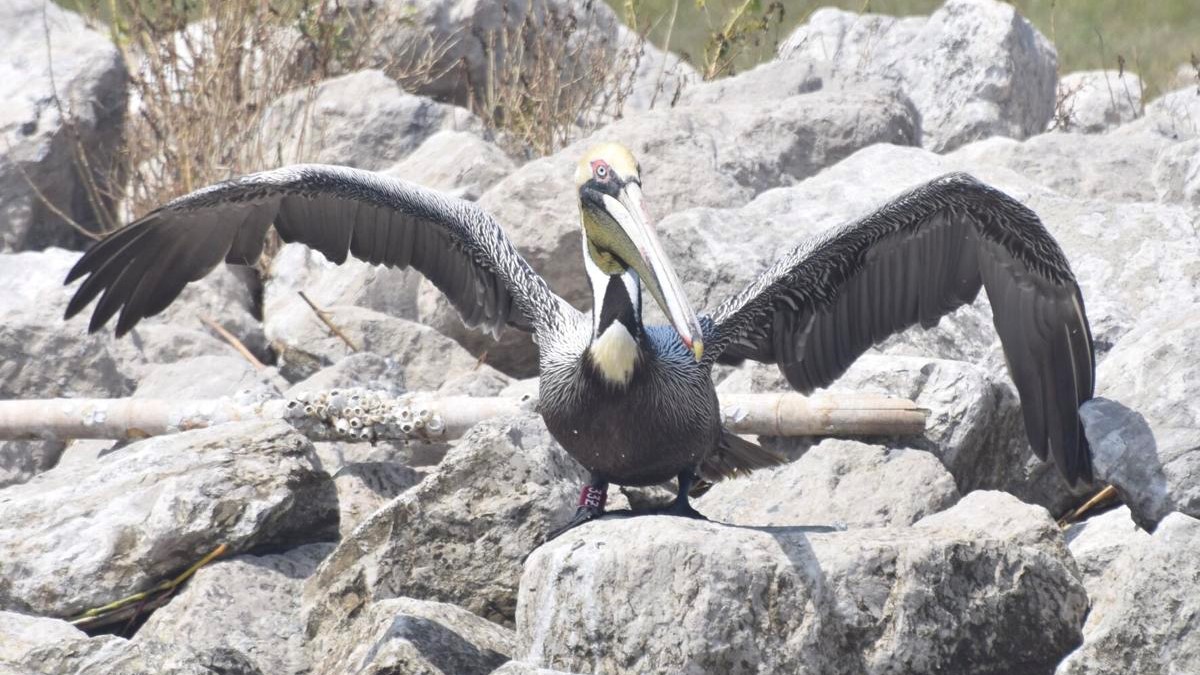Pelican rescued from Deepwater Horizon disaster flies hundreds of miles home
The bird traveled more than 700 miles to return to its birthplace.

A brown pelican rescued from the Deepwater Horizon oil spill 11 years ago has finally returned home.
After being found completely covered in oil on June 14, 2010, the bird was taken from Louisiana to Georgia to avoid the ongoing spill, where it was later rehabilitated and released. Now, over a decade after its traumatic ordeal, the pelican has finally made the 700-mile (1,100 kilometers) journey back home.
"It's truly impressive that it made its way back from Georgia," Louisiana Department of Wildlife and Fisheries (LDWF) biologist Casey Wright, who spotted and photographed the pelican sitting atop a rock on Queen Bess Island in Barataria Bay, said in a statement.
Related: In photos: Flight of the brown pelicans
The bird was identified by the tag that was clipped to its right leg after its rescue from Empire Jetty in Barataria Bay in the aftermath of the spill, which smothered the Gulf of Mexico with more than 400,000 tons (370,000 metric tons) of oil.
The spill began on April 20, 2010, and news reports flooded the world with images of marine animals slicked black with oil. Many died because they were unable to swim or fly due to the spill, or from toxic exposure to the hydrocarbons in the oil, which seeped into their bloodstream through their skin, eyes and orifices. Oil spilled from the pipe for 87 days, wreaking enormous environmental destruction across the coast; with lasting effects on the area to this day.
The U.S. Fish and Wildlife service estimates that 65,000 to 102,000 birds were killed by the disaster. Of the more than 5,000 birds collected, only 582 were successfully rehabilitated.
Get the world’s most fascinating discoveries delivered straight to your inbox.
After being taken to a triage facility and cleaned, the bird spent a few weeks in a rehabilitation facility in Louisiana. After that it was transported outside the disaster area to a U.S. coast guard station in Brunswick, Georgia, and released on July 1, 2010.
One factor in this particular pelican's remarkable homecoming was the cleanup effort made by the LDWF to restore the animal's nesting area, Queen Bess Island, which accounts for 15% to 20% of the young brown pelicans that hatch in Louisiana each year, according to the LDWF.
Another factor was the bird's excellent homing skills. Brown pelicans (Pelecanus occidentalis) range far along the coastal regions they populate, traveling farther south, toward the tropics, during winter and returning to their birth colony during the breeding season.
"Brown pelicans, like most seabirds, are thought to be hard-wired, genetically, to return to their birth colony to breed, despite moving long distances during the non-breeding season," LDWF non-game ornithologist Robert Dobbs said in a statement. "That may be an overly simplistic generalization, but re-sighting data of banded pelicans often support that pattern."
The Deepwater Horizon spill wasn't the first trial these hardy birds had to face. Brown pelicans were close to extinction in the 1960s because of the effect the insecticide DDT had on their eggs — which became thin and deformed. Regulators banned DDT in 1972, and the iconic bird of the Pelican State was removed from the endangered species list in 2009.
Originally published on Live Science.

Ben Turner is a U.K. based writer and editor at Live Science. He covers physics and astronomy, tech and climate change. He graduated from University College London with a degree in particle physics before training as a journalist. When he's not writing, Ben enjoys reading literature, playing the guitar and embarrassing himself with chess.



